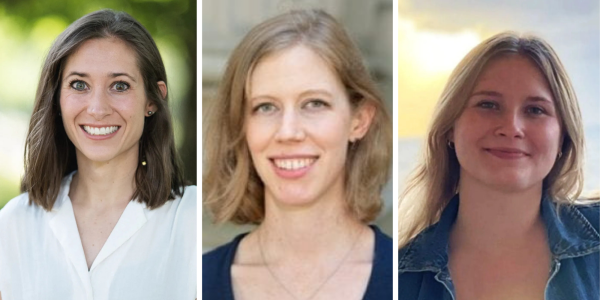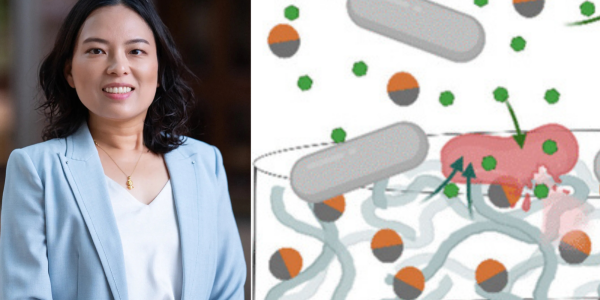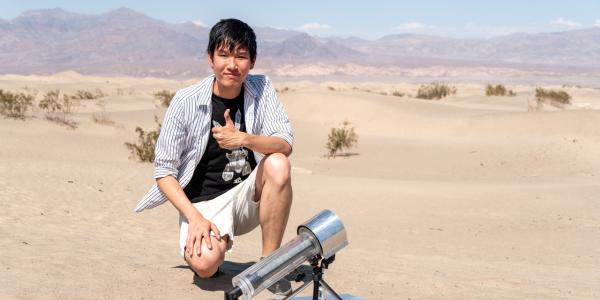Political scientist Bill Lowry, who played a central role in launching and directing the Sustainability Exchange, reflects on the program's success.

If you’ve had the privilege of chatting with political scientist Bill Lowry in the Zoom era, you’ve probably noticed that his home office sports an array of national park maps, laid out roughly by geography, that record his travels. Lowry’s love of public lands permeates not only his office and his vacation plans, but also his scholarship. Among his many publications is the 1994 book The Capacity for Wonder: Preserving National Parks, which compares the American and Canadian national park systems – and is actually fairly critical of our northern neighbors.
A few years after Capacity’s publication, Lowry heard of a major initiative to revamp Banff National Park’s management strategy, and he had to check it out. He traveled to Alberta, snagged a meeting with park leadership and asked, essentially, Why are you guys doing this? To Lowry’s shock, at least part of the credit fell to his book. Park leaders told him that Harvey Locke, a giant in Canadian conservation efforts, would bring the book to meetings and say, “This is why we’ve got to change things around here.”
“I was so proud of myself!” Lowry recently told me. “Here’s this place I love, and I wrote about it, and I may have had an impact. It was so cool.”
Lowry – who cringes at the descriptor “retired” – is now one month into his new status as professor emeritus of political science. The Banff story offers a glimpse into not only his career, but also his approach to advising students: Work on something you care about, he tells them, and that’s when you’ll do your best work. That’s your chance to make an impact.
By one estimate, Lowry taught 1 of every 10 Arts & Sciences students throughout his 33 years as a faculty member. So popular were his classes that he often filled campus’ largest lecture halls; his advising was in such demand that academic coordinators had to stop assigning him advisees. Those students who were lucky enough to land in one of his courses – full disclosure, 18 years ago I was one of them – left the classroom with more than just graded assignments and academic credits. We left with an understanding that theory and practice can combine to improve the world, or at least a small corner of it.

Nowhere is this more evident than the Sustainability Exchange, an immersive, interdisciplinary capstone course and environmental practicum that Lowry helped launch in 2015. Each semester, Exchange students team up with on-campus clients and community partners to tackle real-world environmental challenges. Projects have included an inventory of greenhouse gases for the OneSTL sustainable development plan; an index of Danforth Campus trees that helped the university win national arboretum accreditation; a lifecycle analysis of cloth diapers versus disposables; and assessments of bird-building collisions throughout campus.
“We're trying to make the world a better place, one project at a time,” said Lowry. Doing so requires hard work not only in the classroom, but on the ground and out in the community. Adaptability, problem-solving, and organizational skills are key, and solutions are rarely straightforward, Lowry said. “Our students learn how to build teams, put plans into action, and, with any luck, they’ll have an impact on something they care about.”
The projects that Sustainability Exchange students take on are messy, nuanced, and complex. For many students, it’s their first time applying years of college education to real problems. And for many, Lowry notes, it’s their first chance to really screw up.
“Screwing up is an important part of this. We expect Exchange students to screw up, and they learn from that,” said Lowry. Unlike a more traditional course, false starts and early missteps don’t necessarily translate to a bad grade. Ambiguity is inherent to Exchange projects, and near the beginning of each semester, students often ask Lowry exactly what they should be doing. His answer? “I don’t know – your job is to figure that out!”
That’s not to say students are left floundering. Lowry is always the first to credit the Exchange’s success to its cadre of project advisors. Faculty members from every WashU school have helped guide Exchange projects – some have led a team each semester since the course’s inception – often with the help of experts from the greater St. Louis community. These advisors help keep projects on track and teams working smoothly. But, ultimately, the success or failure of each venture falls to the students.

The Sustainability Exchange is one of a growing number of community-engaged, hands-on courses at WashU. The momentum they bring to campus and the academic experience is palpable. I wrapped up my own time as a WashU student in 2005, then returned as a staff member 11 years later. By then, the campus landscape had changed as much pedagogically as it had physically. Students can now take advantage of experiential, engaged-learning opportunities that, in Lowry’s words, let them get their hands dirty. Courses like the Exchange can be difficult to get off the ground, but Lowry found support from a variety of university partners including the Provost’s office, the Gephardt Institute, and individual departments and programs.
“For me, Bill’s legacy will always be the Sustainability Exchange,” said David Fike, professor of earth and planetary sciences and director of the Environmental Studies program. “He created a space where students are asked to solve real problems and grapple with ambiguity. That can be hard and uncomfortable. But for many students, getting pushed outside their comfort zones is a real breakthrough, and it helps them see where they want to go after WashU.”
And, in several cases, Exchange projects have helped students land jobs after graduation. “That’s one thing we’re really proud of,” said Lowry. “Our students go into the job market with a really interesting story to tell, and interviewers can get really psyched hearing about it.”
Lowry recently handed off the Sustainability Exchange to David Webb, lecturer in environmental studies, and Carolyn Cosgrove Payne, community engagement coordinator, and the two now co-direct the course. They have ambitious plans for the Exchange, including more projects aimed at community-identified priorities, a focus on environmental justice and equity, and broader participation by faculty and students across diverse disciplines. Webb also co-teaches a Beyond Boundaries course called “To Sustainability and Beyond: People, Planet, Prosperity.” Open to first-year students, the course helps participants gain collaborative skills they’ll need when facing the broader, interdisciplinary challenges of a capstone course like the Sustainability Exchange.
Building on Lowry’s work, Webb and Cosgrove Payne continue to recruit students, faculty, and community partners who want to change the world, one project at a time. And Lowry, from his new perch as professor emeritus, will be there cheering them on. "Those two are doing a great job!" Lowry told me. "It's exciting to watch them take over the Exchange and really run with it."
Want to get involved? Faculty members in any department or school, as well as community groups, can submit project ideas for the 2021–22 academic year until Feb. 28, 2021. In some cases, the Sustainability Exchange can fund faculty participation. Contact Webb and Cosgrove Payne for more information.




